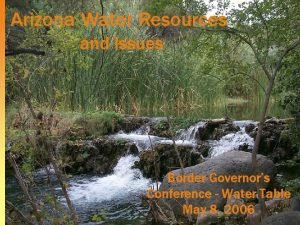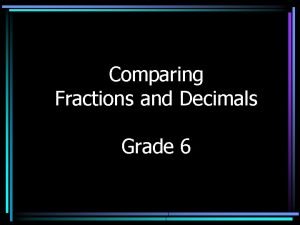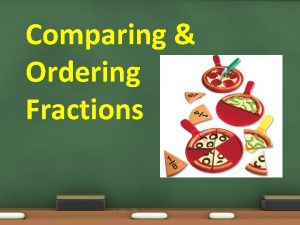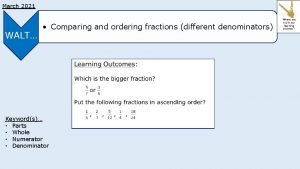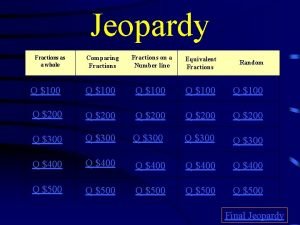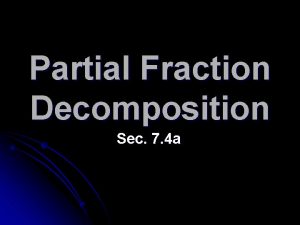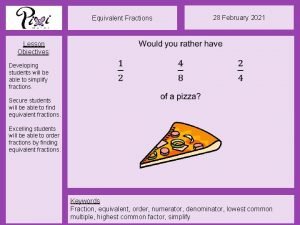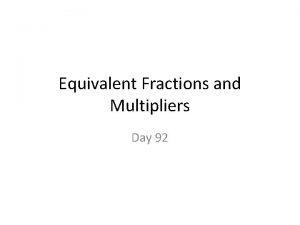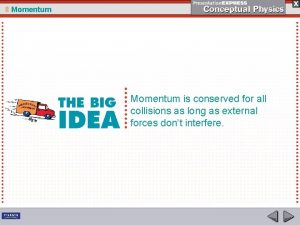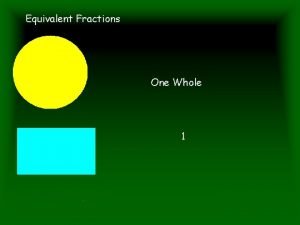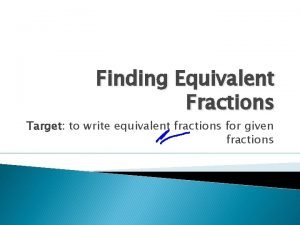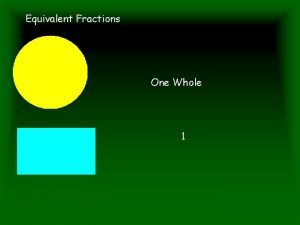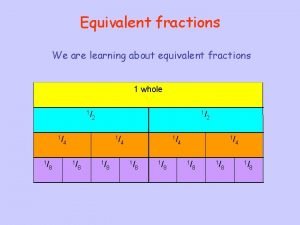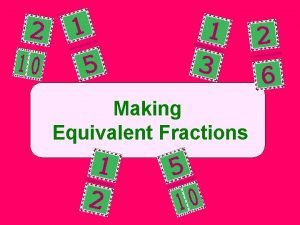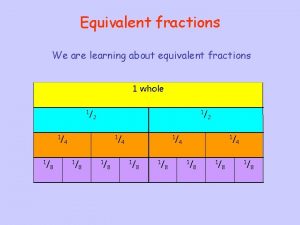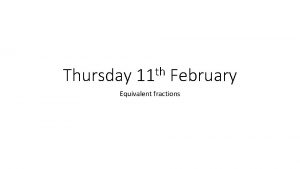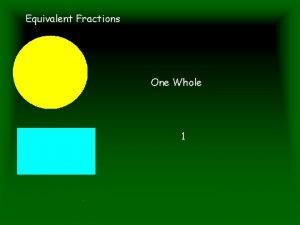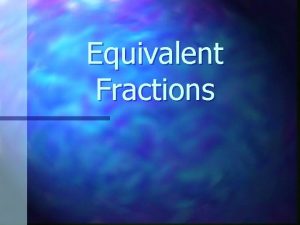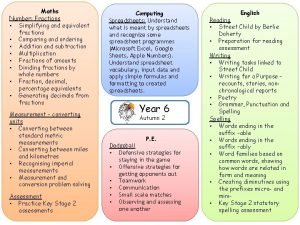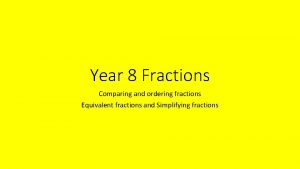Equivalent Fractions and Comparing Fractions Featuring Fish Lake















![On your own [Customize lesson here] On your own [Customize lesson here]](https://slidetodoc.com/presentation_image_h/32cf31beed20a05eb0634f59481bfe5f/image-16.jpg)

- Slides: 17

Equivalent Fractions and Comparing Fractions Featuring Fish Lake

Common Core State Standards CCSS. MATH. CONTENT. 4. NF. A. 1 Explain why a fraction a/b is equivalent to a fraction (n × a)/(n × b) by using visual fraction models, with attention to how the number and size of the parts differ even though the two fractions themselves are the same size. Use this principle to recognize and generate equivalent fractions. ] CCSS. MATH. CONTENT. 4. NF. A. 2 Compare two fractions with different numerators and different denominators, e. g. , by creating common denominators or numerators, or by comparing to a benchmark fraction such as 1/2. Recognize that comparisons are valid only when the two fractions refer to the same whole. Record the results of comparisons with symbols >, =, or <, and justify the conclusions, e. g. , by using a visual fraction model.

What is a fraction? ● A fraction is a comparison of two numbers. Two two numbers compare the parts to the whole. ● The numerator (top number) represents the parts you have. The denominator (bottom number) is the number of parts in a whole. Numerator Denominator 9 Part 11 Whole

Equivalent fractions Definition: Different fractions that name the same number. The shaded boxes are just parts of same part of the whole group. one half is equal to two fourths, which is also equal to foureighths

Making Equivalent Fractions ● Divide the top and bottom by the same number to get an equivalent fraction. 10 ÷ 2 = 5 12 ÷ 2 = 6 ● Multiply the top and bottom by the same number to get an equivalent fraction. 10 × 3 = 30 12 × 3 = 36

Equivalent Fractions on a Number Line

Equivalent Fractions on a Number Line Pick out the equivalent fractions on these number lines.

Use a multiplication chart to find equivalent fractions. Find the numbers you want to use. Stack them on one another. Each set of numbers is an equivalent fraction.

Using Tables for Equivalent Ratios 12 30 60

Practice

Assessment Write three fractions that are equivalent to each fraction. 1. 2. 3. 4. 5. ⅔ ¾ 18/20 6/27 50/100

Game time! Let’s play some Fish Lake! ● In Fish Lake, you will practice your fractions by fishing. ● You will practice identifying fraction values using a number line. ● You will also get to learn some Native American history.

Comparing fractions To be able to compare fraction you will need to use your knowledge of equivalent fractions to create fractions with common denominators (the same denominator) so that you can compare. You also can use the number line method.

Comparing fractions 4/6 is bigger because it is further to the right on the number line. Or you can find a common denominator and see which one has more parts.

Comparing fractions on a number line Try both methods.
![On your own Customize lesson here On your own [Customize lesson here]](https://slidetodoc.com/presentation_image_h/32cf31beed20a05eb0634f59481bfe5f/image-16.jpg)
On your own [Customize lesson here]

Play Fish Lake! Practice fractions! Common Core State Standards addressed in the game: CCSS. MATH. CONTENT. 4. NF. A. 1 Explain why a fraction a/b is equivalent to a fraction (n × a)/(n × b) by using visual fraction models, with attention to how the number and size of the parts differ even though the two fractions themselves are the same size. Use this principle to recognize and generate equivalent fractions. ] CCSS. MATH. CONTENT. 4. NF. A. 2 Compare two fractions with different numerators and different denominators, e. g. , by creating common denominators or numerators, or by comparing to a benchmark fraction such as 1/2. Recognize that comparisons are valid only when the two fractions refer to the same whole. Record the results of comparisons with symbols >, =, or <, and justify the conclusions, e. g. , by using a visual fraction model.
 One fish two fish red fish blue fish ride
One fish two fish red fish blue fish ride Twofish and blowfish
Twofish and blowfish Ammocoete
Ammocoete Lake powell and lake mead
Lake powell and lake mead Lake powell and lake mead
Lake powell and lake mead Comparing fractions and decimals
Comparing fractions and decimals Compare and order fractions
Compare and order fractions Features of acrostic poems
Features of acrostic poems If a round analog clock featuring numbers 1-12
If a round analog clock featuring numbers 1-12 Featuring
Featuring Oligotrophic vs eutrophic lakes
Oligotrophic vs eutrophic lakes Comparing fractions with different denominators
Comparing fractions with different denominators Jeopardy equivalent fractions
Jeopardy equivalent fractions Partial fraction rule
Partial fraction rule Define comparing fractions
Define comparing fractions Equivalent fractions and multipliers unit 1 lesson 3
Equivalent fractions and multipliers unit 1 lesson 3 Equivalent fractions and multipliers
Equivalent fractions and multipliers A big fish swims up and swallows a small fish at rest
A big fish swims up and swallows a small fish at rest




